Scarlatti’s Griselda is based on a story from the Decameron. Gualtiero, king of Sicily, has married Griselda, a shepherdess. The people are upset that the king has married beneath him and are getting stroppy. Gualtiero sets out to prove Griselda a worthy consort by testing her constancy. He repudiates Griselda and sends her back to shepherding while arranging to marry an Apulian princess Constanza, who both he and Corrado, duke of Apulia, know to be his daughter by Griselda. It’s complicated by one Ottone who is infatuated by Griselda and Roberto, son of Corrado, who is in love with Costanza, who returns his feelings. Griselda is put through various humiliating trials in which she repeatedly shows her devotion to Gualtiero. Eventually the people recognise her virtue and all is restored. One notable thing, unlike his predecessor Cavalli, Scarlatti doesn’t inject any incongruous or comic passages into the opera. It’s all deadpan serious.
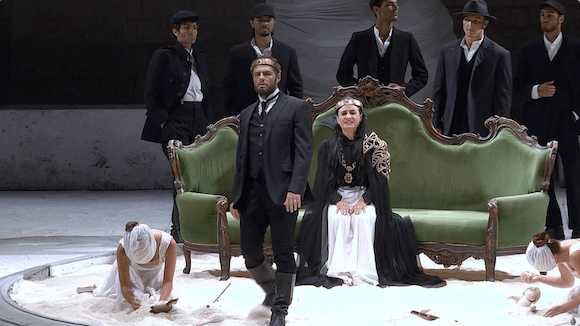
When the opera was first performed in Rome in 1721 it was with, of course, an all male cast with a tenor singing Corrado and castrati playing the other roles. The production recorded at the Festival della valle d’Itria in 2021 deals with this by casting sopranos in the roles of Griselda and Costanza, mezzos as Ottone and Roberto and a counter-tenor as Gualtieri. There are also staging constraints as the work is performed on an improvised stage in the courtyard of the palazzo ducale in Martina Franca (about 20km north of Taranto which might interest naval history buffs).
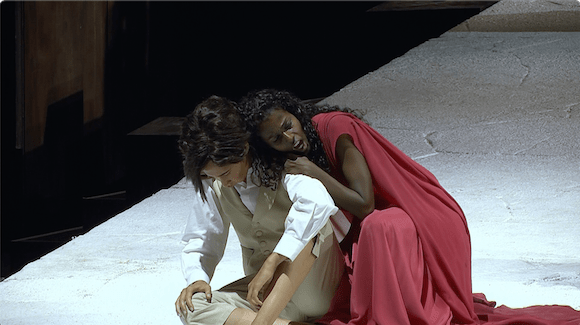
It’s an interesting staging directed by Rosetta Cucchi. The first act set features an elaborate green sofa in a sand pit surrounded by what look the screens of confessionals. There are lots of extras; girls in white dresses with what look like net bags over their heads, a bunch of toughs, a rather sinister looking priest etc. Exactly what they are all doing I’m not sure but they contribute to creating a sense of foreboding. At the end of the act a bleeding Roberto (he’s cut his wrists) is carried away on the sofa leaving a more or less bare stage to represent the wood in the first part of Act 2.

Act 2 proceeds with a few visual clues to tell us whether we are in the palace or Griselda’s part of the forest but it all changes up for Act 3. Now the principals are seated in a row at the front of the stage tied to their chairs. It’s clear why Ottone is tied up (he’s tried to kidnap Griselda) but why the others? Maybe it’s to create a sense that the outcomes are pre-ordained? Anyway, everybody has a silent double who act out the plot in various combinations, mostly in the sand pit. Gradually everybody gets untied and the singers become actors again for the final resolution where all is made good.
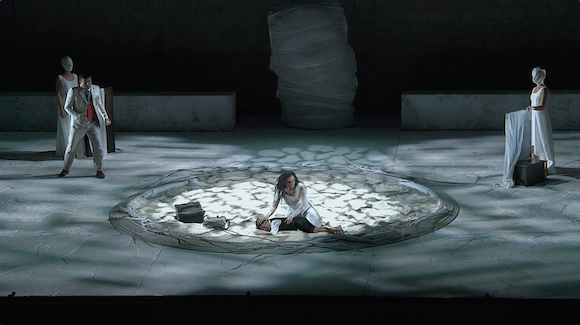
Musically it’s probably about what one expects for the period. It’s mostly a sequence of recits and da capo arias though, somewhat unusually, there are a couple of duets, a terzetto and a quartet. It’s quite elaborate with lots of flashy runs and ornamentation. The mood of each aria fits into a distinct type/mood; lament, anger etc. It’s very well done though. Some of the arias are really quite moving and the ensembles are well worked.
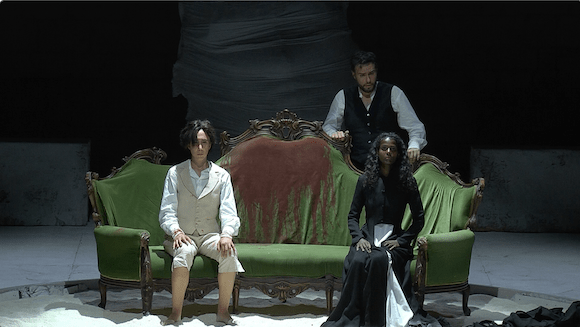
The performances are excellent. Raffaele Pe sings Gualtiero with great musicality and genuine acting ability. Carmela Remigio as Griselda is perhaps even better. She’s convincing throughout and technically in command of some difficult material but it’s the last couple of scenes where she really shines. She is tremendously moving both as the woman who chooses death rather betray her deepest beliefs and as the mother who is reunited with her long lost daughter. Marriam Battistelli is a fierce, proud Costanza with plenty of vocal chops. Francesca Ascioti as Ottone and Miriam Albano as Roberto both make convincing angsty male adolescents. Krystian Adam as Corrado rounds out an effective ensemble cast. La Lira di Orfeo are in the pit. They have a somewhat abrasive but appropriate period sound that works well here. The Coro Ghislieri make a brief appearance for the finale. George Petrou conducts.
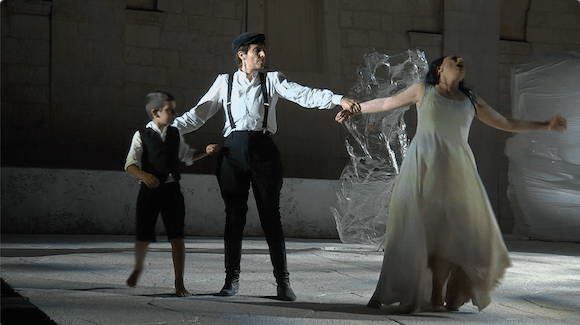
Marco Scalfi directs for video. It’s not easy. The stage is often quite dark and there are scenes where there is a lot of separation between what’s going on. For example there’s a duet where Griselda and Costanza are at the extreme opposite ends of the stage with, essentially, nothing between them. There’s a similar problem in Act 3 where one of the chairbound singers may be some way away from the pantomime in the sand pit. There are times where Scalfi chooses to handle this by split screening. Usually it’s something I hate but here it seems justified.
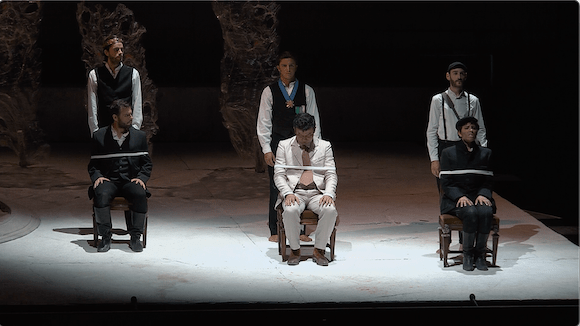
Technically the disk has excellent sound (both DTS-HD surround and stereo) but even on Blu-ray the picture is only just good enough to cope with the lighting. There are no extras on the disk but the booklet is good with a useful history of the piece that sets it in the context of opera developments in Italy in the early 18th century. There’s also a synopsis and a detailed track listing. Subtitle options are English, Italian, French, German, Korean and Japanese.
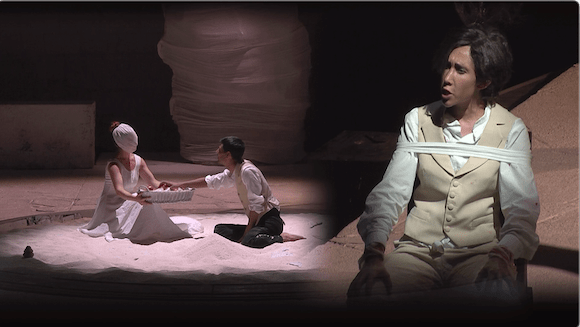
This is the only video recording of Griselda. In fact it’s one of only three video recordings of Scarlatti operas which seems a bit surprising because it’s really rather good and Scarlatti wrote at least 70 operas. Definitely worth a look.

Catalogue number: Dynamic Blu-ray DYN-5793
